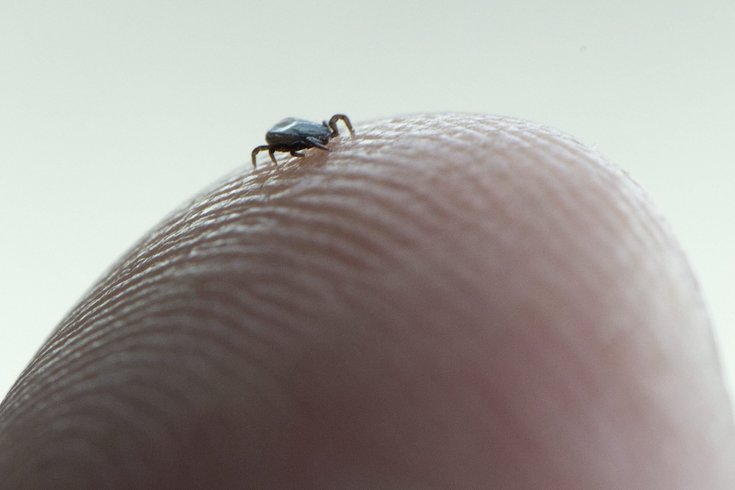
June 09, 2021
 Fredrik Sandberg/TT/Sipa USA
Fredrik Sandberg/TT/Sipa USA
Tick season began in mid-April and lasts through the summer months, although ticks can infect humans year-round, according to the Pa. Department of Environmental Protection.
Experts warn that with the higher rain and humidity levels we are experiencing, this could be one of the worst tick seasons in recent memory. Do you know how to protect yourself from tick bites and the diseases they spread?
Tick season began in mid-April and lasts through the summer months, although ticks can infect humans year-round, according to the Pa. Department of Environmental Protection.
"As climate change continues to warm our winters, we’re seeing higher tick populations surviving months that used to be too cold to survive," explains Patrick McDonnell of the Pennsylvania DEP.
"As the number of ticks continues to rise, so do the odds of tick-borne disease transmission. We must remain diligent – both in protecting ourselves from bites, but also in seeking long-term solutions to address climate change."
The blacklegged or deer tick is the most common carrier of Lyme disease. They are most often found in tall grass and wooded areas, but can live in any habitat. Deer ticks can be found throughout the Philadelphia area and South Jersey.
Lyme disease and other tickborne diseases are already on the rise in Pennsylvania, according to the Pa. Department of Health. Similar reports are also coming out of New Jersey, as well.
Experts warn that people should be vigilant about finding ticks on their skin and monitoring any symptoms they experience after being bitten.
Lyme disease is a bacterial infection caused by a bite from an infected tick. Symptoms can manifest up to a month after a tick bite.
According to the Mayo Clinic, from three to 30 days after an infected bite, a rash in the form of a bullseye called erythema migrans may appear around the bite. It generally expands slowly over a few days and is not itchy or painful, but may appear warm to the touch.
It is important to note though that the rash can also spread to other parts of the body as well. Symptoms of Lyme disease include fever, chills, aches, headaches, stiffness and swollen lymph nodes. Fatigue is also common.
If not caught early and treated properly, Lyme disease can cause more severe health problems including joint pain and inflammation, and even neurological and heart damage.
According to experts from the Centers for Disease Control and Prevention, the Mayo Clinic, Cleveland Clinic and the Pa. Department of Health, the best way to protect yourself from tick bites is to avoid walking in tall grass and always stay in the center of the path when hiking. Also use insect repellent with DEET on any exposed skin.
Once you get back from a known tick-infested area, take a shower and check yourself for any suspicious spots on your skin that may be a tick burrowing in. Ask a loved one to check hard to reach spots like the scalp and your back for you.
The longer a tick remains attached to you, the more likely you will contract Lyme disease so vigilance is critical, experts say. Ticks can be removed using a pair of tweezers to pull them out. Just make sure the head doesn't remain in your skin.
Clean the bite mark with an antiseptic and if you start to experience any symptoms of Lyme disease, make an appointment with your doctor as soon as possible. Early Lyme disease can be treated with antibiotics.